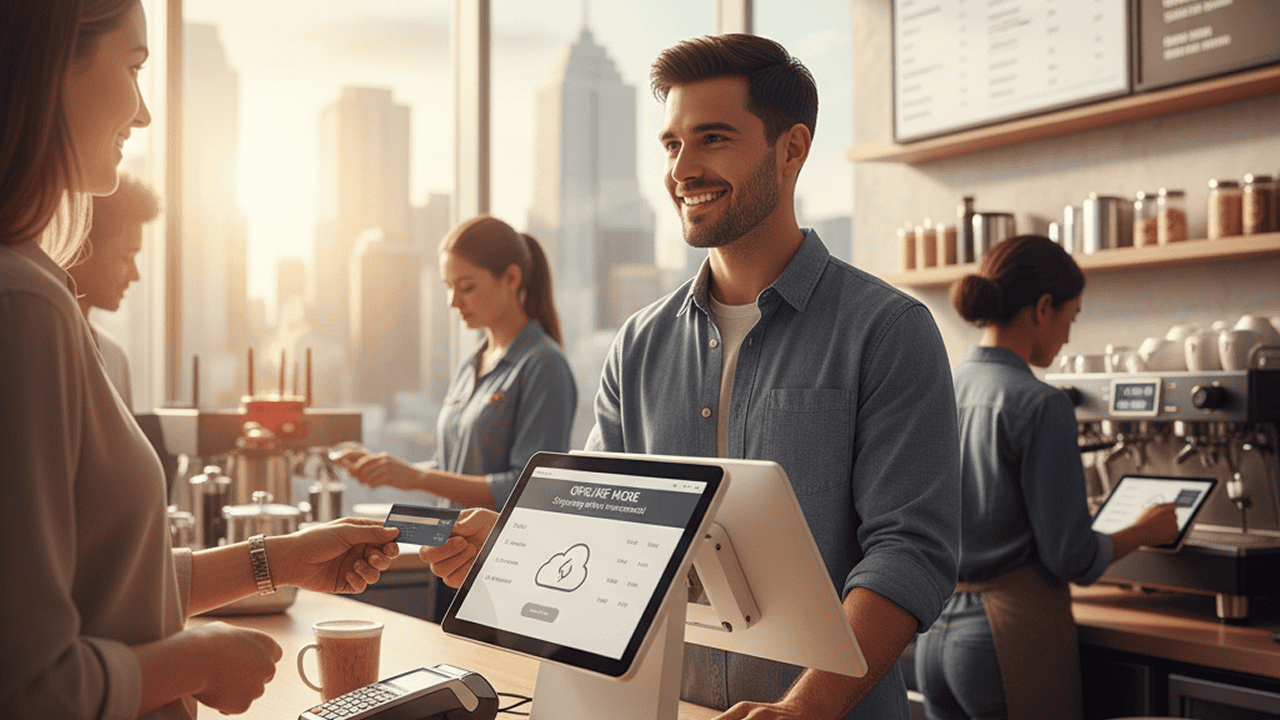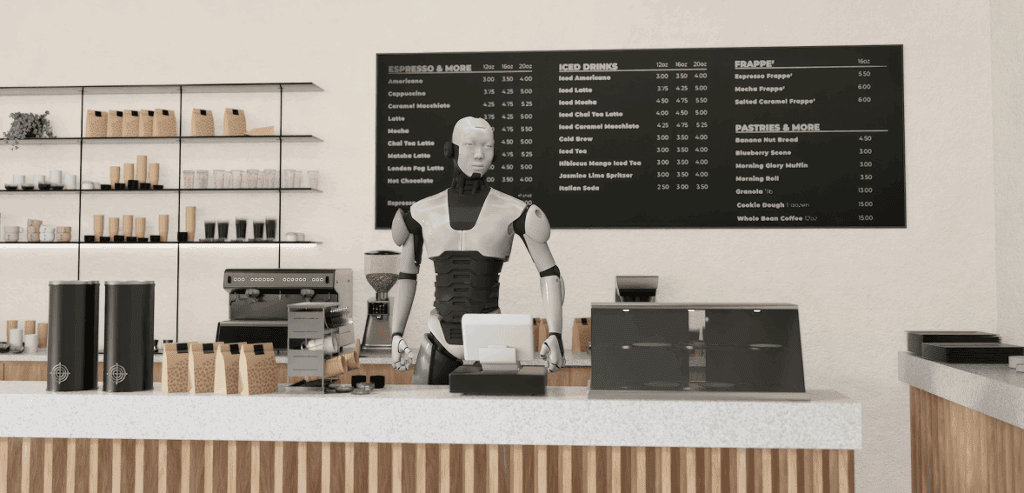
By Geraldine Burns November 10, 2025
In today’s digital dining landscape, a reliable restaurant point of sale system is the backbone of operations. Every order, payment, and report flows through it, connecting the front-of-house, kitchen, and back office in real time. But even the most advanced systems depend on one invisible thread—the internet. When that connection drops, even for a moment, chaos can creep in. Servers can’t send orders, guests can’t pay, and the line at the register gets longer. That’s where offline mode becomes the unsung hero of modern restaurant POS systems, ensuring service continues seamlessly when the internet blips.
Offline functionality transforms potential downtime into uninterrupted productivity. With the right POS for restaurants, staff can still take orders, print receipts, and process transactions locally, even without network access. Once connectivity is restored, all data syncs automatically, preventing discrepancies or lost sales. It’s a silent safeguard against the unpredictable—keeping the restaurant’s rhythm intact and guests unaware that anything ever went wrong.
The Real Cost of Downtime

Every minute of outage translates to more than lost sales. It impacts guest experience, staff morale, and operational flow. Without a resilient point of sale, simple tasks like splitting a check or processing a payment grind to a halt. In fast-paced environments like cafes or quick-service restaurants, even a short disruption can create long queues and frustrated customers. That’s why offline capability is not a luxury—it’s a necessity.
Modern restaurant POS systems mitigate this risk by storing transaction data locally on the device. Orders entered during an outage are queued securely and sent to the cloud once the connection resumes. This allows the kitchen to keep preparing meals and servers to continue taking new orders without interruption. The beauty of offline mode lies in its invisibility—guests never see the disruption because the system keeps functioning as if nothing happened.
For owners, this translates into confidence. Even during internet outages, payments can still be accepted, tickets still printed, and operations still recorded. Integrated restaurant payments that work offline make sure that no transaction is lost, reducing potential revenue gaps that often accompany downtime.
How Offline Mode Works
Offline functionality in a restaurant point of sale depends on intelligent synchronization and local caching. When the internet drops, the POS automatically switches to offline mode without user intervention. All new orders and payment data are stored locally in encrypted form. Once the connection returns, the system syncs those transactions to the cloud, reconciling everything in real time.
This technology ensures no duplication or data loss. For example, a server using a handheld restaurant POS system can continue taking orders and closing checks even while the network is down. The kitchen display still receives queued tickets through local communication protocols, so food preparation remains uninterrupted. Once online again, everything—from payment records to receipts—updates seamlessly.
It’s an elegant balance of independence and integration. The POS for restaurants retains autonomy in local mode while maintaining the reliability of centralized cloud storage. For restaurants with unstable connections or those located in rural areas, this capability is critical. It guarantees continuity, protects revenue, and preserves the guest experience regardless of external conditions.
Offline Payments and Data Security
One of the biggest advantages of modern restaurant POS systems is their ability to process payments offline while maintaining PCI compliance. This means transactions are authorized later but recorded accurately at the time of sale. Cards can be swiped or dipped, and customer details are encrypted instantly. When the system reconnects, these pending payments are securely transmitted for authorization, ensuring no revenue slips through the cracks.
For restaurants, the integration of offline restaurant payments means flexibility. Staff don’t have to turn guests away or request cash-only transactions during outages. This capability preserves professionalism and trust. Moreover, data encryption ensures all stored payment information remains secure until it’s safely transmitted to processors. This dual-layer protection—local resilience and compliance—makes offline mode not only convenient but also safe.
Beyond payments, the system continues logging essential data such as order history, tip amounts, and time stamps. This ensures comprehensive reporting even during interruptions. For managers, there’s peace of mind in knowing that the point of sale remains the single source of truth, regardless of network status.
Maintaining Kitchen Efficiency

The kitchen display system (KDS) plays a vital role in keeping operations smooth during outages. Offline mode ensures that tickets are still routed locally to kitchen stations, allowing chefs to keep working without pause. Communication between the handheld restaurant POS system and the KDS happens over local connections, bypassing the need for internet access.
This means dishes keep moving, orders keep cooking, and guests keep dining—all while the network issue resolves in the background. Once connectivity returns, the KDS updates automatically, syncing time stamps, completed orders, and status changes with the cloud. This ensures operational accuracy and consistency without extra input from the kitchen staff.
Restaurants that rely on digital coordination between front and back of house benefit immensely from this redundancy. By maintaining workflow during outages, the POS for restaurants eliminates bottlenecks that could otherwise slow down turns and affect service quality.
The Importance of Resilient Technology
Not all restaurant point of sale systems are created equal. True offline capability requires careful engineering that prioritizes redundancy and data safety. A reliable platform like Bread’s POS is built on this foundation—ensuring that order-taking, printing, and payment processing continue without a hitch. This resilience is particularly important in locations with fluctuating bandwidth, mobile network reliance, or high transaction volumes.
Restaurants cannot afford to let external connectivity issues dictate internal operations. A well-designed restaurant POS system maintains full functionality during disruptions, and once online, synchronizes without duplicates or data conflicts. This is the type of reliability that turns technology into trust—both for staff and customers.
From small cafés to large dining groups, offline reliability guarantees that business never stops. It also reassures staff, who can continue serving confidently instead of scrambling for backup systems or paper tickets. In an age where efficiency defines competitiveness, uninterrupted service is the new benchmark of excellence.
Empowering Staff and Elevating Guest Experience
When technology fails, human connection matters most. Offline mode enables staff to maintain composure and confidence during outages. Guests continue enjoying smooth service—orders are taken, payments recorded, and receipts printed without visible delay. This steadiness strengthens the restaurant’s reputation for reliability.
Servers using handheld restaurant POS systems can still process orders tableside, while managers retain visibility into floor operations. Because the point of sale operates locally, team performance remains unaffected. This empowers staff to deliver hospitality uninterrupted by technical limitations.
For guests, the experience remains fluid and frictionless. They never sense the disruption behind the scenes. By shielding customers from connectivity issues, the restaurant preserves its image as organized and dependable—an experience that encourages repeat visits and positive reviews.
Future-Proofing Restaurant Operations

The restaurant industry is moving toward total digitalization, where data, payments, and analytics operate in real time. Yet, no amount of connectivity can promise 100 percent uptime. Offline functionality is the safety net that keeps operations grounded when the unexpected happens. A future-proof restaurant point of sale must anticipate outages, not just recover from them.
Offline capability ensures that your restaurant doesn’t depend entirely on a single external factor. Whether it’s Wi-Fi downtime, server maintenance, or ISP issues, the POS for restaurants keeps running independently. Once service is restored, synchronization happens automatically and transparently. For multi-location brands, this ensures consistent reliability across all branches.
In an age defined by instant service, diners expect consistency more than perfection. Offline resilience delivers that consistency, ensuring every meal, payment, and experience flows smoothly regardless of what’s happening behind the scenes.
The Silent Strength of Staying Connected
When the lights flicker or the Wi-Fi drops, the real measure of technology is how it behaves under pressure. Offline mode is that quiet strength built into the best restaurant POS systems—an invisible ally that ensures no sale, smile, or service is lost to connectivity. It’s the difference between a momentary blip and a full-blown breakdown.
A cloud-based restaurant point of sale like Bread’s bridges both worlds: always online when available, yet always operational when not. This duality defines resilience in modern hospitality. With offline ordering, payments, and kitchen communication, restaurants stay open, efficient, and trustworthy no matter the conditions.
In the fast-paced world of dining, downtime isn’t an option. With a POS for restaurants that keeps serving through every internet hiccup, the focus stays where it belongs—on great food, happy guests, and uninterrupted service.